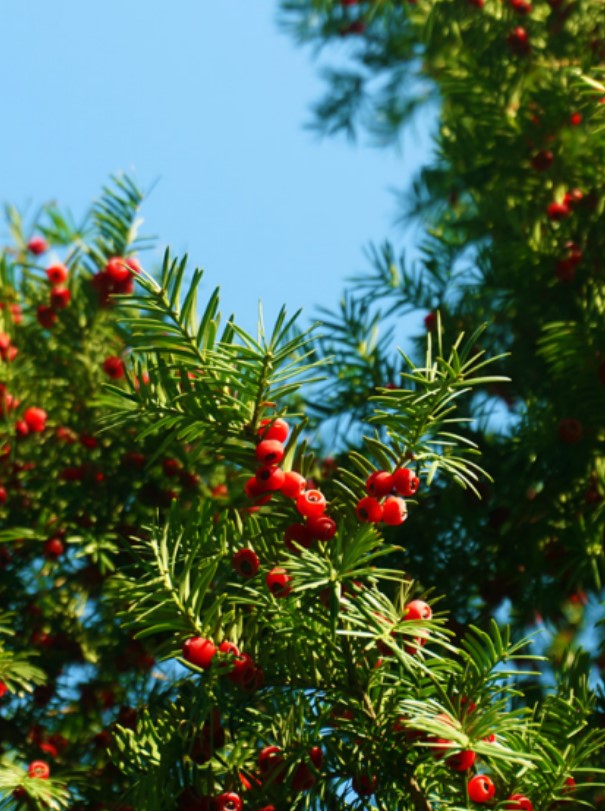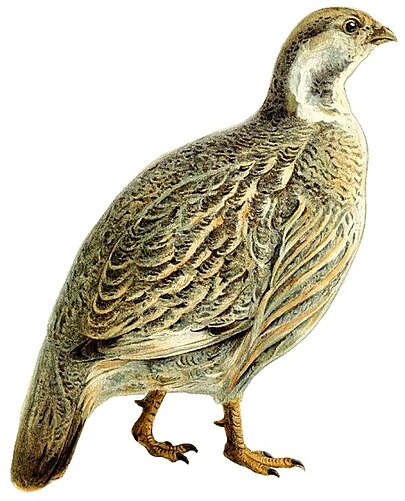A BIOLOGICAL LIBRARY
OF LIFE – AKHMETA’S LAND
The unique nature of Akhmeta Municipality, stretching from the Alazani lowlands to the frozen peaks of the Caucasus, resembles a multi-layered library. Its plains, ravines, valleys, ridges, and glaciers carefully preserve a vast repository of the world’s biological diversity, a unique catalog of endemic species, and millennia of accumulated natural wisdom.
The Ground Floor -Babaneuri State Reserve
A journey through Akhmeta’s extraordinary environment begins at the roots of the Caucasus, within the Babaneuri State Reserve, established in 1950. Ranging in altitude from 380 to 1,100 meters above sea level, the reserve spans just 834 hectares, yet its complex terrain and diverse soils make it a sanctuary for exceptional habitats. The reserve is home to 60 species of dendroflora and an entire cohort of small mammals. As you enter the Babaneuri sanctuary, hawthorn, privet, medlar, cornelian cherry, and dog rose emerge from the earth’s depths, while Hares, weasel and beech marten dart among their roots. Deeper in the reserve, endemic Georgian oaks, field maples, walnut trees (Juglans regia), grayish oaks (Quercus pedunculiflora), Caucasian wingnut (Pterocarya pterocarpa), and boxwoods (Buxus colchica) stand side by side. Occasionally, larger mammals like a wolf or bear might be spotted, disappearing into the forest thickets. The echoing sounds of rivers accompany the calls of the forest’s permanent residents – roe deer and foxes – which vanish into the woodland shadows. The main storage of the reserve shelters an ancient resident of these lands—a relic from the Tertiary period, the Caucasian Zelkova tree (Zelkova carpinifolia), reigning as a natural patriarch. Its elongated, elliptical leaves sway in harmony with those of its companions, whispering the accumulated wisdom of nature. These unique, ancient groves of Babaneuri are recorded in Georgia’s ‘Red Book,’ safeguarded as living relics of nature that share their enduring story with every visitor.

The Second Floor – Batsara State Reserve
Nestled within the Pankisi Gorge, on the right bank of the Alazani River and in the Batsara River Valley, lies the Batsara State Reserve, spanning approximately 3,000 hectares. Established in 1935, this reserve is encircled by mountains and rests between 700 and 2,000 meters above sea level. The terrain is complex, deeply cut by small and large ravines, rendering many areas almost inaccessible. Perhaps it is this remoteness that led the yew tree (Taxus baccata), locally known as ‘Utkhovari,’ to choose this secluded area as its sanctuary. Though it remains a mystery how and when the yew first took root in the upper reaches of the Alazani River, records show that ancient, untouched groves of this relic species have thrived here for centuries. Considered one of the Earth’s oldest plants, the yew’s needle-like leaves and red berries have long captured the imagination, earning it a place in folklore, art, and poetry. However, due to the overuse of the tree’s prized timber, it was driven close to extinction during the Middle Ages. A legend connects the yew groves to Queen Tamar of Georgia. According to folklore, The Queen was responsible for preserving these groves. During her reign a special decree was issued, forbidding peasants from cutting down the yew forests. Furthermore, this order was so unyielding that no one was allowed to request any exceptions. This is said to be the origin of the tree’s Georgian name, ‘Utkhovari’, meaning ‘unasked.’ Remarkably, Georgia remains the only place on Earth today where the yew survives as a relic forest. In Georgian tradition, unlike in many cultures, where the yew symbolized death and misfortune, it is revered as a sacred tree. People offered gifts to the sacred tree, asking for family blessings, prosperity, and fertility – a tradition that persists today, with the yew considered the ‘Holy Angel Tree.’ Remarkably, the main attraction of the Batsara Reserve – ‘Utkhovari’ is revered with equal respect by both the Christian and Muslim communities of the municipality. The ancient groves of yew trees in Batsara Reserve are enriched and protected by a range of other endemic plants: sweet chestnut (Castanea sativa), field elm (Ulmus minor) oriental beech (Fagus orientalis), hornbeam (Carpinus caucasica), and alder (Alnus barbata). Moreover, relatively mild, humid climate of Batsara’s reserve is also home to rare Colchian plant species unusual for eastern Georgia, such as Georgian snow rose (Rhododendron luteum), cherry laurel (Laurocerasus officinalis), Colchic or Black Sea holly (Ilex colchica), and daphne (Daphne pontica). To the west of Batsara’s Reserve, lies another distinctive place – the Ilto Managed Reserve, covering 7 591 hectares of enchanting landscapes. Established in 2003, Ilto Reserve comprises the headwaters of the Ilto River Valley and has a special mission to safeguard its precious tree species and their habitats: the unique beech forests and yew, linden, maple, and ash-tree groves, as well as the unique fauna that calls this habitat home. Amid these forests roam large mammals like roe deer, chamois, brown bears, and wild boars, while more common predators here are wolves, lynxes, and wild cats. In the alpine zone, rare and scavenging birds such as griffon vultures, cinereous vultures, bearded vultures, and golden eagles reside. The sanctuary’s terrain is interwoven with numerous gorges and rugged landforms. The Ilto River itself flows steeply through a rocky bed, with dense forested slopes surrounding it. In the subalpine zone, the landscape softens, and the slopes and fields are adorned with a rich array of vegetation, adding even more uniqueness to the contrasting scenery of the Ilto Sanctuary.

The Scenic Floor – Tusheti State Reserve
Spread across 83,007 hectares on the eastern slopes of the Greater Caucasus, the Tusheti State Reserve is a breathtaking expanse stretching between 900 and 4,800 meters above sea level. This vast area unfolds like the layered arrangement of traditional Tushetian architecture. Its step-like terrain is marked by the stunning gorges of Chanchakhovani, Pirikiti, and Tushetian Alazani rivers, their confluences, alpine meadows, and snow-capped glaciers that rise like sentinels in the clouds. Among these are the majestic peaks of Tebulo (4,492m), Diklo (4,285m), and Borbalo (3,294m).A journey into Tusheti begins with greetings from Caucasian oak, mountain ash, and goat-willow trees. Soon, however, the true hosts of this unique habitat—pine (Pinus kochiana) and birch (Betula litwinowii and Betula raddeana) groves—invite you into their domain. These groves alternate in perfect harmony, eventually forming a vast, natural chessboard across the Tusheti slopes.Each spring, a magical phenomenon unfolds on these slopes: the Tusheti pines enter a flowering phase, releasing a gentle haze of pollen, hovering like a veil over the green-cloaked slopes and forest crowns. As June winds rise, they carry these pollen brumes across villages, meadows, and hills, wrapping all of Tusheti in a magical healing and revitalizing pine atmosphere. Ascending further on your journey, you’ll encounter Tusheti’s iconic alpine meadows, carpeted in vibrant wildflowers and adorned with rare species like the Caucasian snow rose (Rhododendron caucasicum) and junipers (Juniperus oblonga, J. depressa, J. sabina). From below, the murmur of lively rivers, home to rare trout (Salmo trutta) and the Caucasian toad (Bufo verrucosissimus), rises like an echo, harmonizing with the rustle of forests in the middle reaches, where bears, jackals, foxes, lynxes, and wolves roam, and rye deer and chamois occasionally dash across your path. At the border between the forest and alpine meadows, mysterious creature of myths and legends, often called the ‘solitary hunter’ may shimmer along the cliffs like a comet. There is a fleeting chance to glimpse this elusive and nearly invisible animal’s golden-yellow body marked by unique black spots. This is a rare Caucasian Leopard (Panthera pardus), locally known as the ‘Jiki’. Experts believe that with a bit of luck, one might spot in the subalpine rocky sparse woodland another treasure of the Caucasus — the majestic Bezoar goat (Capra aegagrus), one of the region’s most vulnerable and prized species. At the highest elevations, where rivers are born and earth meets sky, in speechless silence lives the king of the peaks, the East Caucasian tur (Capra cylindricornis). During summer, it rarely descends below 2 800 meters above sea level, preferring the inaccessible cliffs of the Atsunta Ridge, where it is protected by the rugged terrain that keeps human threats at bay. In the ‘Atsunta section,’ much of the landscape remains nearly unreachable year-round, not just from the ground but even from the air, as helicopters rarely fly over this fog-covered region. Instead, cutting through the Caucasus sky, flies the last of an ancient lineage—the Caucasian snowcock (Tetraogallus caucasicus); it nests at the highest peaks, close to the Caucasian tur, amid rocks and crevices. In the desperate winter months, when food is scarce, it feeds on the turs grazing grounds, where these “highlanders” loosen the snow with their hooves, helping the snowcock find food. In return, this cautious bird watches over its mountain companions, giving them an early warning call in case of danger. Its whistle echoes off the peaks like a boomerang, waking the Caucasus and heralding the arrival of a new day. As the first rays of sunlight break, the Caucasian grouse (Tetrao mlokosiewiczi) appears and the black figure of a male bird is well visible on the slightly grassy green slopes. Awakened, the Caucasus skies fill with arching cinereous vultures (Aegypius monachus), lammergeiers, (Gypaetus barbatus), griffon vultures (Gyps fulvus), and golden eagles (Aquila chrysaetos). They soar drawing circles and gazing down upon the varied landscapes—steep, expansive, flat—where rare, endangered animals roam and rare ecologically ancient plants of this region thrive. Here, amphibians, reptiles, fish, insects, plants, animals, and groves all breathe the same air, weaving together an unbreakable chain of coexistence and harmony.
